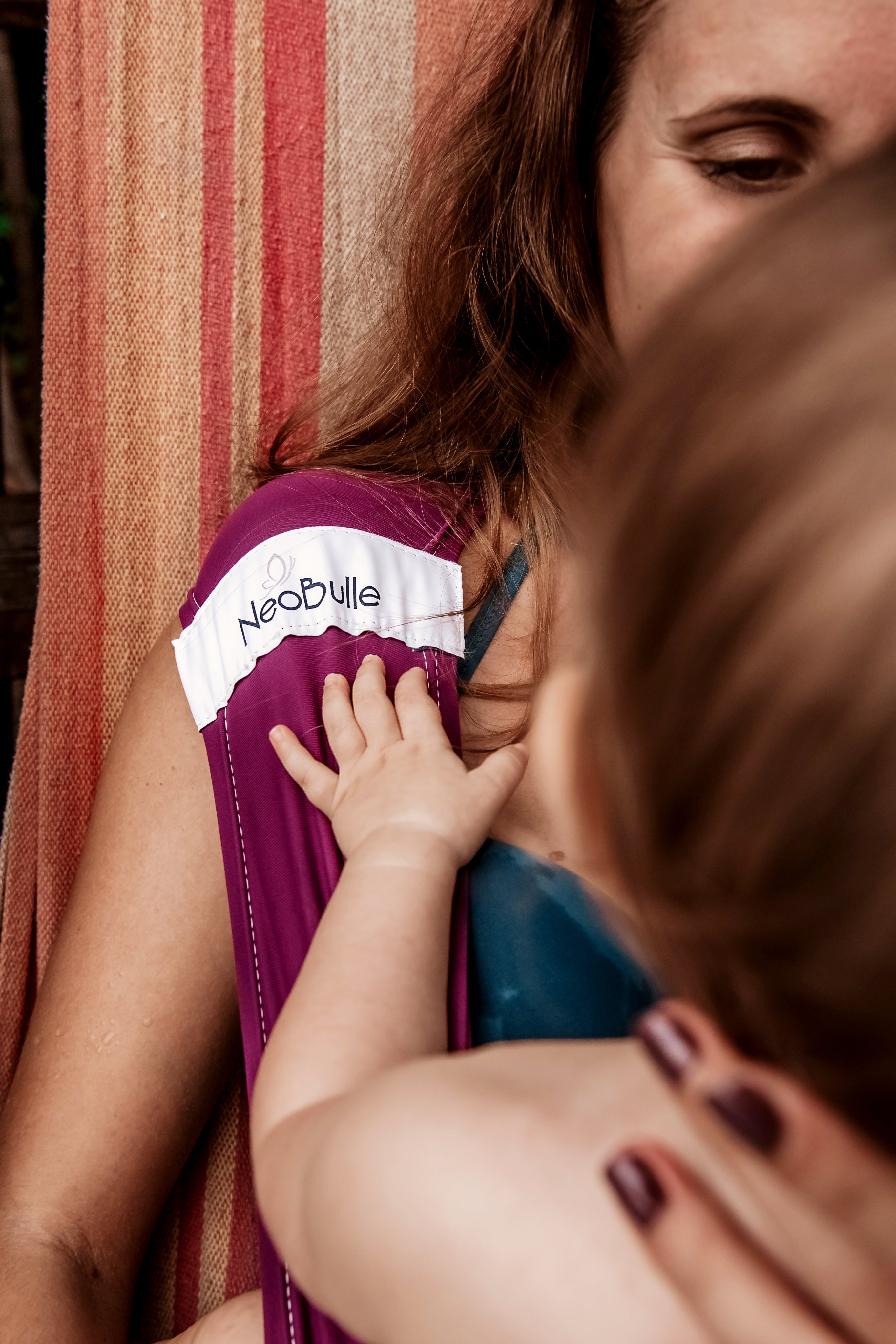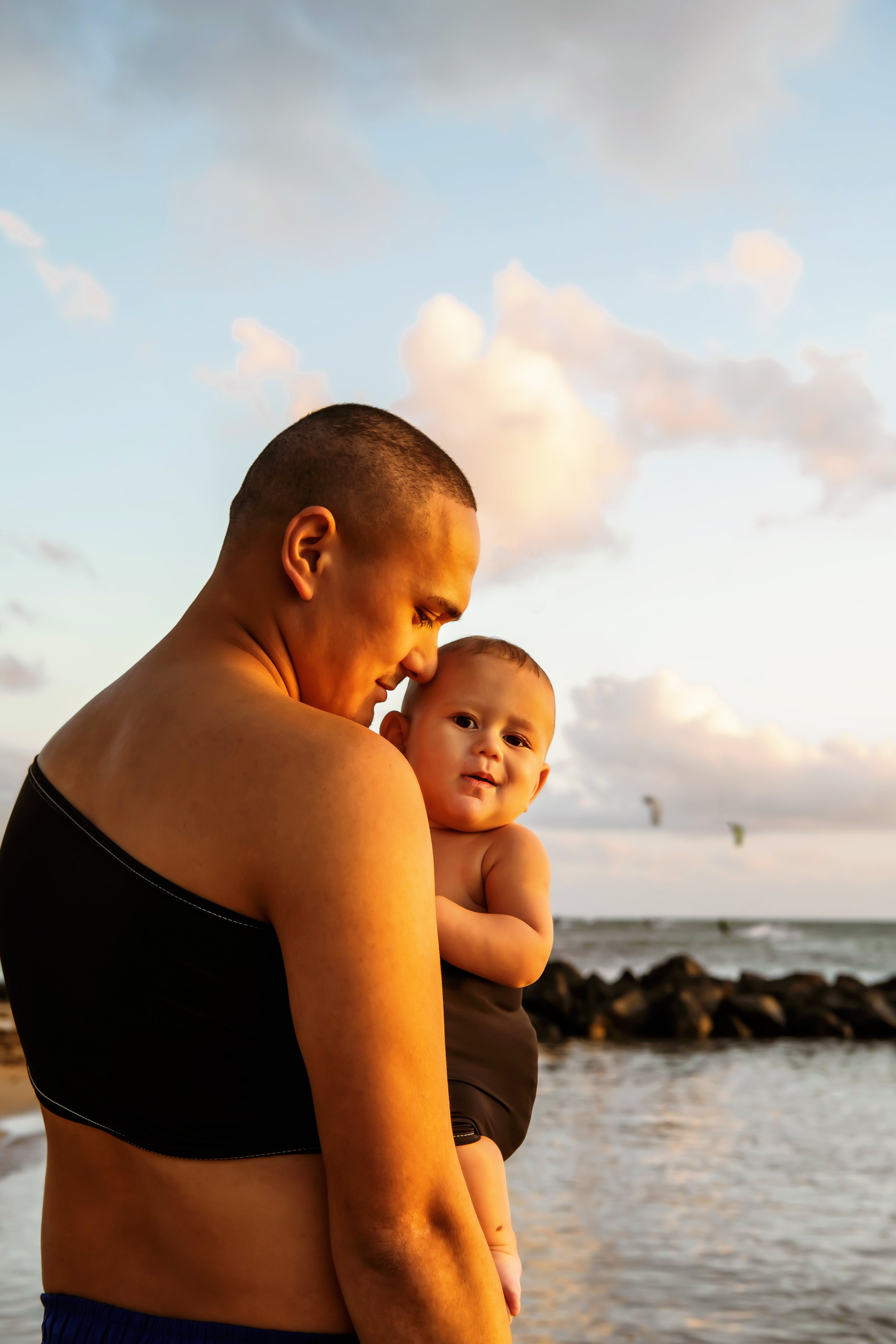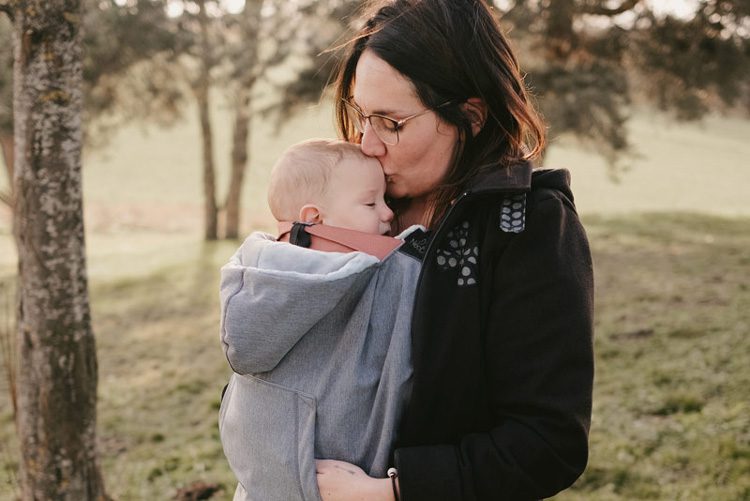
Wearing winter
Too hot? Too cold? It's the eternal question of ALL parents, which becomes a reality until the child is old enough to clearly express how they feel (and where, generally, you don't believe them anyway, but that's another topic...). The most obvious solution is to favor contact and proximity with your little one, and therefore carry them. But how to cover them and be sure they won't be cold when temperatures drop? We offer you a brief overview of best practices. Dress baby in the baby carrier It is always recommended to dress your baby normally, as indoors, remembering that the carrier counts as clothing: if your little one has a small undershirt on the floor on their mat, for example, you should remove it in the carrier, because the material of the system around them replaces it. When you want to go outside, you dress more warmly, but around the baby and yourself, not each individually. The first reflex is often to want to put a jumpsuit (pilot suit) or a coat on your child. This raises several problems: It is very uncomfortable for your baby, especially if you try to maintain a physiological position: imagine sitting, crouched in a ski suit, and you'll get a little preview! It's quite stiff: it generally prevents your baby from bringing their hands to their mouth, which they need to calm and reassure themselves. This is also true in a stroller! It creates significant layers at the joints, which can especially hinder proper blood circulation in the legs It can hinder the proper clearance of the airways by creating thickness at the throat It prevents proper adjustment of carrying systems and can pose safety issues (increased risk of falling, especially in a sling) And most importantly: since the baby is farther from you, they also cool down much more because they no longer benefit from your body heat! Which is totally counterproductive. Carrying over your coat is also discouraged: Impossible to make a proper installation this way Risk of injury from buttons and zippers And like with the jumpsuit: the farther the baby is from you, the easier they cool down. The idea is then to have your little heart dressed in normal indoor clothes, possibly a thin undershirt if it's really -10°C, and then: Cover what extends beyond the baby carrier: hat, slippers/leggings (hands are against you and do not get cold) Put on your usual coat and we position a carrying blanket to make the connection on the baby (wide coats tend to cover the respiratory pathways). The advantage of doing so is that in case of passing through warmer places (such as a store), it allows you to easily uncover your baby and prevent him from "cooking" in his suit and crying while you finish your shopping. Note that thick clothing is also discouraged in cars: The harness of the car seat or shell must be very snug on the baby; with a suit, it adjusts to the thickness, but in case of shock, it flattens and the child can pass through the harness, so he is no longer protected The car's heating quickly warms the interior and your baby will be way too hot. NB: Neobulle's carrying blanket is designed to be used also in the car, making it a go-to tool for everyday logistics! Clear the airways The fear of cold should not make you forget the basic safety rules; clearing the airways is at the top of the list. It is not uncommon in winter to see parents pull up the blanket or their coat all the way to the top of their toddler’s head, to be sure that cold air will not bother him. In fact, cold air won't bother him, but the air in general will not circulate! And it’s likely you’ve noticed that he needs some air to breathe. Like with the baby carrier, the blanket or coat should reach up as high as the back of the neck of your child, leaving the face visible and clear. A hat or a hood is more than enough to protect his head. "Put on your little woolly sweater, you'll catch a cold!" In quite general terms, behind the fear of cold is actually the fear that the child won't get sick, largely fueled by popular beliefs and the injunctions to "dress the baby well because they get cold easily, you know". On one hand, overbundling is not better than underbundling. And most importantly, you don’t get sick because of the cold, but because of pathogenic elements in the environment (viruses, etc...). If cold can slightly sensitize the mucous membranes and humidity can promote germ proliferation, it is not directly responsible for falling ill. You could run naked in the snow, for example; if your path did not cross with a virus, you would stay healthy (plus cold preserves). ) ! Avoid passing from arm to arm and kisses, airing out the home, washing hands well, and wearing a mask if you are ill will be much more effective measures to protect your little one from winter ailments (bronchiolitis, for example)! Singing in the rain Carrying your baby also makes outings easier in rainy weather. We dedicate this paragraph to those who have already had to urgently figure out how to install the rain cover on the stroller in pouring rain, to those who had to mop up their flooded entryway with water dripping from the rain cover and mud from the wheels, and to those who found themselves pushing the stroller in a deluge without a free hand for an umbrella. We know you know! (Others, we leave it to your imagination) With just an umbrella, you can continue your journeys calmly and dry ! Carrying and winter activities Mountain activities, does that appeal to you? Yes, but with a good baby carrier! Many winter activities are accessible when you carry your baby. Of course, we advise against climbing Mont-Blanc, but a short walk or snowshoe hike is entirely possible ! The usual precautions are quite basic: Favor back carrying due to increased fall risks with front carrying Avoid a too long walk, especially if it is very cold (remember that your baby does not exert physical effort and cools down faster than you) Take small, regular breaks to move your baby a bit and ensure that their extremities do not get too cold. Feet, in particular, are very prone to frostbite. This risk is greatly reduced by using a physiological baby carrier and by the close proximity to the carrier (far from you in a child carrier with supports, the child cools down much faster !) In case of extreme temperatures, you can opt for lightweight woolen clothing instead of cotton: soft and thin, they keep the baby warm without making them sweat or overheat, and allow freedom of movement and comfort. You also appreciate carrying if you have clothes to retrieve from the snowfront (étonnantly, the wheels of the stroller roll much less well on snow). In short, you understand that close to you, it is much easier to assess whether your child is hot or cold, and they better regulate their temperature. Incidentally, it also keeps you warm, which adds to the pleasure !
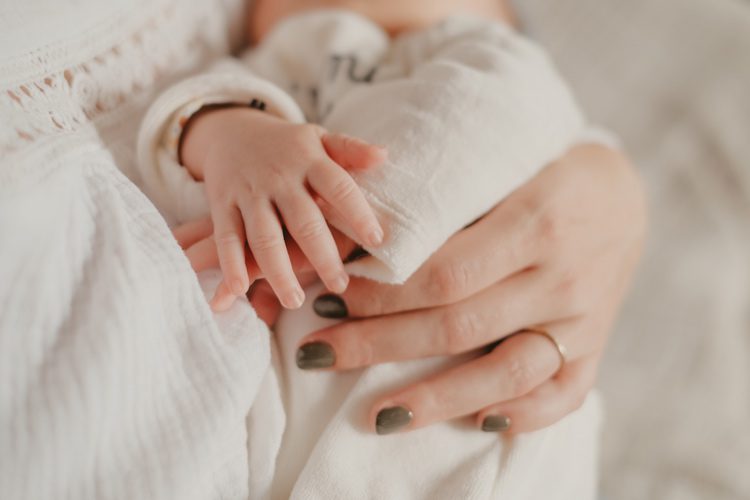
The containing touch
The benefits of massage are numerous! Touch, no matter how simple, is important for baby and their development. Touch, is already what you do when you carry them, give them a bath... There are several types of touch, and in this article, I would like to talk more specifically about the containing touch, which I find particularly magical. The containing touch is particularly suitable for many situations: For children who do not want to be massaged, for children we cannot calm down, for disorganized children, "scattered"... The technique has the advantage of being very simple. It suffices to use both hands, placing them at two opposite points on the baby's body, then applying gentle pressure while bringing our hands closer together (keeping the baby's body between our hands). This movement aims to "gather" the baby and has a calming, containing virtue... like in the mother's womb! This technique is magical: I have tested it on people of all ages and the reactions were quite surprising. With a baby who was crying and, as soon as his mother performed this touch, he stopped, started to fidget again if his mother removed her hands, and calmed down as soon as she put them back... Older, on a teenager who told me: "what you just did is great, it brought us together!". On an adult woman I performed this touch at the end of a massage session, and she told me it was her favorite moment. I think that somewhere, deep inside each of us, who has known the containing womb of our mother, this touch brings us back to something very reassuring, archaic.

Taking a baby on a trip
Dreaming of adventure, travel, hopping into a van for a road trip all around Europe... But your family has just grown and you're not quite sure how to reconcile the two. What if carrying gear was a key element to making your project happen? The quest for minimal clutter Young parents know this: the volume of equipment to bring when you have a baby is ! Whether for a short weekend or a longer trip, renting the necessary semi-trailer to carry the "just in case" gear is generally not part of the plan. So begins the painful sorting process. Some choices are simple, but others are more tricky: the maxi stroller is very comfortable for the baby but takes the space of 3 suitcases. Meaning: you'll have to do without, but you'll need to figure out how, without sacrificing everyone’s comfort. This is where the baby carrier finds its first advantage: Flexible, compact, and lightweight, it easily slips between two bags and takes up almost no space. Remember a weekend in the mountains with 3 children and a dog in a tiny car packed to the brim, where the baby carrier was folded as a blanket over the baby and the sling was worn as a snood around my neck (the stroller, on the other hand, wouldn't fit!). Note that space saving is only effective if you opt for physiological baby carriers: large hiking backpacks with frames, besides being very uncomfortable, don't fold well and also take up a huge volume! A little breeze of freedom Who hasn't found themselves stuck in front of a huge staircase, a cobbled street, or a monument visit where stroller access is prohibited? The baby carrier allows you to face all unforeseen obstacles of your trip without headaches. Baby follows you everywhere, regardless of the terrain! Fancy a spontaneous hike on nearby paths? Just clip it on and go! An inaccessible place for the stroller? No need for a last-minute backup plan, nor the risk of theft if you leave the stroller in designated space. Whether for a day at the beach or a sightseeing tour, thanks to carrying you remain free to move around and can travel anywhere without the risk of getting stuck. Travel with confidence in transportation A suitcase in one hand, the stroller to fold in the other, the crying baby to manage in the middle, and the crowd getting impatient behind (without help, of course, that would be too simple)... Does this situation sound familiar to you? It’s the one that often occurs when trying to take the train with your baby. Sometimes, there are also difficulties when taking the plane, between the oversized stroller that must go in the hold or takes the place of another carry-on bag, and the security checks and waiting time before boarding to manage. Seated in a carrier, your child is secured during various handling procedures, you have free hands to manage a possibly fussy baby, and you can also sneak through the aisles more easily if they need to be rocked. The globetrotting baby For the baby, there are also many advantages to traveling in a carrier! Environmental changes can sometimes be more difficult for some little ones to handle: away from home, they can become nervous, anxious, have more difficulty falling asleep, and their routines and references are disrupted. This is all the more true as the transit places can be noisy and overwhelming (crowds, noise, lights...). Snuggled against you, they are reassured and secured and cope better with the various upheavals. Since tourist sites are often very popular, it’s not uncommon to find yourself right in the middle of a crowd. In a stroller, the child is at knee height of the people, even if you are careful they can be jostled, burned by cigarettes held downward, and the sight of legs pressing around them is clearly not the most pleasant. Snuggled against you, they will feel less overwhelmed by the crowd, and they can also enjoy the visits and panoramic views. For older children, they will also appreciate being able to rest a bit when they are tired. The ideal baby carrier for the little budding adventurer Now that the basics are covered: which carrying system should we put in our travel bag? If you have to choose only one, a preformed carrier is probably the most versatile because it combines both comfort with good weight distribution and the practical necessities of emergency or outdoor setups. It is easy to use for passing airport security or re-installing the baby in the middle of the train aisle upon arrival. Compact and lightweight, it also features a very low volume of bulk. Wrap, sling, and mei-tai They remain choice allies as well but will often need to combine with each other to handle all situations. Being very flexible, they easily slip to the bottom of a bag or between two suitcases and will be appreciated for a more cozy side with a very small one. All that remains is to wish you a good trip!
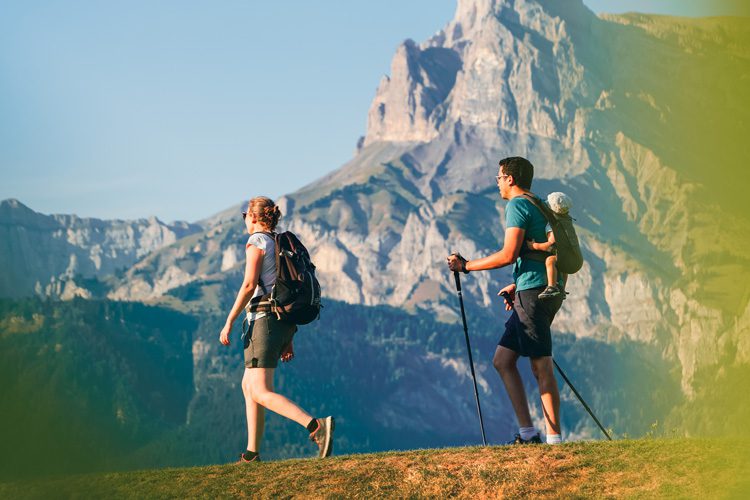
Hiking with baby
The nice days are coming, and with them the prospect of beautiful walks with your baby. It goes without saying that since a stroller is not particularly suitable for scrambling in the middle of the forest (some have tried but did not repeat), carrying your baby is highly recommended to make the experience enjoyable! So yes to carrying, but how, with what, are there any specific recommendations? Let us serve as your guide and let's go on an adventure together. 1st step: safety As with any respectable adventure, it is good practice for the guide to detail the safety rules to incorporate so that the hike takes place under the best possible conditions. Good condition equipment: this seems obvious but it’s always good to point out! Besides the risk of injury from faulty equipment, no one wants to end up carrying their baby in their arms for 5 km during a hike. A well-chosen schedule: in hot weather, prefer the times when it’s coolest, for example in the morning. Coincidentally, the child who acts as your new alarm clock is naturally programmed to wake up very (too) early and allows you to enjoy beautiful sunrises. Generally speaking, avoid routes in direct sunlight at 2 pm, even with good protection, the risk of heatstroke for your baby remains significant. An adjusted itinerary: for the ascent of Mont Blanc, baby must unfortunately grow a bit! More seriously, very long trips can sometimes become boring for children who may become less cooperative after a while. Opt for short enough circuits, which can be done in half a day, for example, allowing you to take your time to enjoy and make all necessary breaks. The route should also be practicable; overly steep or rugged terrains increase the risk of falls and are less suitable for carrying. Regular breaks: speaking of breaks, we invite you to take small pauses regularly to hydrate your baby, check that everything is OK for him, etc. Appropriate clothing: hat and sunglasses are essential! And a good layer of sunscreen as well. Favor light and comfortable clothing, and still bring a small jacket in your bag in case you pass through a slightly cooler forest. Back carrying: last but not least, it is highly recommended to avoid front carrying when the terrain is uneven. Indeed, the risk of falling is increased, especially since a baby affects your balance and obstructs your field of vision, preventing you from clearly seeing the stones and roots to step over. It goes without saying that these recommendations are only supplementary to the general safety rules already mentioned, especially regarding clear respiratory pathways. 2nd step: the baby carrier With safety ensured, we can now focus on choosing the actual carrying system. We have already mentioned it in another article (link to the 10 mistakes), the baby carrier must adapt to your needs and not the other way around, and it is essential here that you feel comfortable with your equipment so that the hike does not turn into a nightmare. When talking about hikes with children, one immediately visualizes large baby carriers with frames and lots of pockets. In reality, these carriers are not very relevant to use, and for several reasons: They are not suitable for the youngest children who cannot stand well They rarely allow the child to be comfortably seated (generally non-physiological, either the legs hang down or the child is sitting but without anything to contain him when he falls asleep) They are abominably uncomfortable: when carrying a hiking backpack, we make sure to place the heaviest elements at the bottom of the bag and as close to your back as possible. Here, you place 2 water packs at the top of the bag, flailing around and far from you! Options sold with sun-shade types are rendered obsolete by good practices, which involve avoiding being in direct sunlight and using a hat and sunglasses. Since this solution is ruled out, the final choice will actually depend on a simple question: do you have a child who walks? Non-walking child: In this case, your baby will be carried throughout the hike. Comfort is therefore paramount! You can use the equipment you are used to carrying with and feel most comfortable with on a daily basis: a sling or mei-tai, for example, can be perfectly suitable. Once installed, you will hardly touch it again. Walking child: This scenario involves the legendary cooperation of the toddler. Like Schrödinger's cat, which is both alive and dead in its box, Schrödinger’s toddler is both too tired to walk but too determined to be carried. Besides wanting to go right when you want to go left, he walks 100 meters, collapses from exhaustion demanding to be carried, then 100 meters further, marvels at a butterfly and wants to walk again, only to collapse 100 meters later and demand to be carried, then pick up a dead leaf 100 meters further and walk again… Immediately put away this carrying sling with which you might quickly end up tying it to a tree, and grab a preformed baby carrier ! The latter remains clipped to your waist, and your toddler will be free to climb up and down as they wish without requiring too much manipulation on your part. Well secured against you, the carrying times will remain pleasant for both him and you. 3rd step: additional equipment You have the baby, the baby carrier, drinks, hat, sunglasses, and sunscreen, you're ready to go. We suggest you pack in your snack bag for your little one: cookies for an older child, a pre-filled bottle for a younger non-buttered, fresh air makes them hungry and they might feel hungry sooner than usual. You can also pack a small first aid kit with bandages, disinfectant, and an insect-repellent stick Our excursion is over, you now have all the basics to go hiking peacefully with your children! Now, just enjoy these beautiful moments shared with family.

How to choose your carrying method?
Choosing the most suitable carrying method for your needs is an important step for anyone who wants to carry their little baby, whether for daily activities or outdoor adventures. There are many different carrying methods, and we have created 3 diagrams to help you see more clearly. Here are three diagrams to assist you: How to choose a newborn baby carrier? How to choose a baby carrier from 4 months old? How to choose a baby carrier for one year and older?
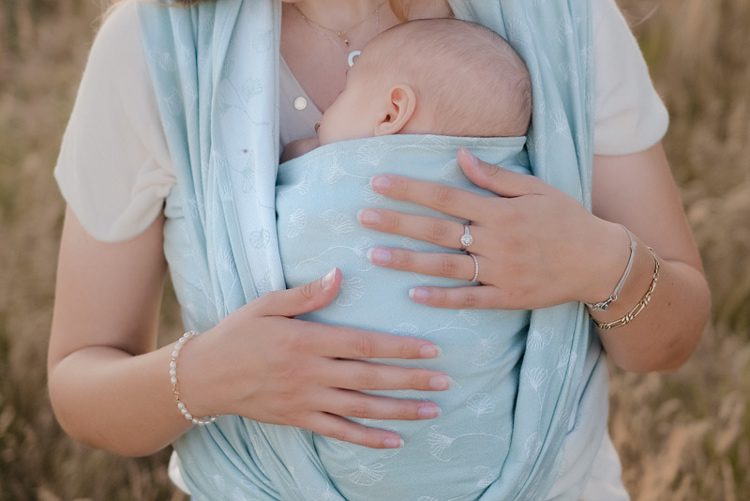
How to properly carry your baby?
You're expecting a baby or have just given birth, and you'd like to try babywearing, but you're not quite sure where to start (with the sling) or how to go about it. And the more links you read on the internet, the more lost you feel! This article is here to help you sort things out and start babywearing calmly. 1 – What is physiological babywearing? You have probably read this term at least 52 times, but what exactly does it refer to? We talk about physiological babywearing when it respects the natural posture of the little one. The main criteria to keep in mind are as follows: Rounded lower back: the spine of the newborn is naturally rounded, unlike that of an adult which forms a kind of S, it tends to form a slightly stretched C (like a comma). An upright back position corresponds, in terms of comfort, to an arched position in an adult, which can quickly become uncomfortable Knees higher than hips: raising the knees allows the baby to sit well into the hip socket and provides better comfort. To illustrate a posture that does not allow for grouping, you can think of sitting on a tall barstool with legs hanging down. These two criteria are of course to be considered in a very overall way. When the child grows, for example, their spine will gradually evolve to reach, around 18 months / 2 years, the shape we see in adults. From a newborn often very curled up, you will observe less and less pronounced rounding over the months, especially as the child wakes up and moves around. Some children are also more tonic than others and will not let you raise their knees higher than their hips, especially common in babies suffering from gastroesophageal reflux (GERD). This should not become a barrier or a source of stress; your baby does not face any risk of injury or poor development if they are not carried in a perfectly physiological way, the main thing is that they are carried and that it helps you in daily life. 2 – Your first babywearing system: your arms It is often overlooked, but your first babywearing tool is your arms! Before even considering using any baby carrier, it seems quite logical to start with the basics: being comfortable with handling your little one. It is recommended to handle your baby respecting their natural wrapping (see point number 1), we will ensure to limit traction and hyperextension postures. This involves avoiding especially lifting the baby by the armpits, preferring for example to first sit him down and then support him by the hips. Supporting your baby's pelvis provides comfort and stability; its base acts as a center of gravity. This reassures and calms him, and also makes handling him easier for you. For your comfort, you can prefer using your forearm as support instead of your hand: when carrying with your hand, you tense up enormously, which promotes tension even in the neck and can lead to wrist tendinitis. Moreover, the hand that carries between the baby's legs invites him to lean backward, which is the opposite of the desired effect. Generally speaking, don't hesitate to use your entire arm and torso to provide a good anchor for your little one without overloading your joints. Remember that when the child reaches 6kg (around 3-4 months), it’s equivalent to carrying a milk pack for several hours a day! Protect your body daily as it is essential from the start. Take the time to find areas on your torso where your baby fits perfectly (body fitting), then adjust the carrier at these points to prevent the head from tilting backward. 3 – Choosing the baby carrier Choosing your system is often the most difficult step! Wrap, sling, mei-tai, preformed carrier, do these words seem like Chinese to you? Don't panic, that's normal. It is true that the market has developed much faster than the usage instructions, and it’s easy to get lost! We invite you first to read our article on the 10 mistakes to avoid when buying a baby carrier, which can give you some useful tips on the subject. To simplify things a bit, we suggest you first evaluate your main need: are you considering practical carrying for home, quick errands or school runs, or rather longer duration carrying for baby naps or walks? The most practical systems are generally slings and preformed carriers . They settle in very quickly, don't drag on the ground, and allow you to immediately carry the baby. The most durable systems are generally the carrying wraps and the mei-tai. They require a bit more time to set up and adjust properly, but they allow for long-term carrying in the best conditions. Practicality and comfort unfortunately tend to oppose each other : the more we want a practical system, the fewer adjustments and settings it will have, and the less comfortable it will be (at least it will remain comfortable but less than others). Being comfortable will instead require a bit more manipulation, which doesn't really match ultra-fast setups. We could compare the wrap to a pair of hiking shoes and the sling to a pair of flip-flops : both are useful but not at the same time ! And just as we wouldn't walk long in flip-flops, we wouldn't wear hiking shoes to go pick up the mail. Do you want to carry both in daily life and during walks ? Rely on 2 different systems to get the best benefits ! 4 – Safety You have your arms, your baby carrier, your baby, and are well prepared for carrying, bravo ! Now let's talk about safety. The safety rules for carrying are quite basic : Baby vertical and facing you : lying in a system, it risks sinking and the fabric can limit good air circulation, these positions should be reserved exclusively for carrying in the arms. Facing outward is also to be avoided (increased risk of falling). Clear airways : your baby's head must always be free, with the carrier and covers pulled up high behind the neck. Is it cold ? Put a hat on! At worst, it's always better to have a small draft than a baby who can't breathe anymore. Clear airways also mean checking that the baby isn't sagging into the fabric: you can pass a finger between their chin and their chest. High carry on the chest : a too-low setup will tend to be too loose, and your baby might get squished. Well-adjusted baby carrier : the fabric wraps around your little one, the adjustments support them, and they can't slip underneath or fall. No sports activities : no running, cycling, skiing, or trampoline with the baby carried! Other important rules can also be added, even if less essential : Flexible clothing that doesn't hinder the baby. Whether in carrying or on the ground, favor loose and non-restrictive clothes; no one would nap or do yoga in slim jeans or a wedding dress, and neither would your baby ! No coat or snowsuit : it is better to keep your little one as close to you as possible to promote thermoregulation. Thick materials hinder proper adjustments, tend to obstruct the airways, and press on the femoral artery, impairing blood circulation in the legs. Cover him from the outside with a carrying blanket or a coat, for example. Regular short breaks so that baby can move a little, ideally every 2-3 hours (which is convenient, as he will generally demand to suck or need his diaper changed around the same rhythm!). In summer, also remember to keep him well hydrated! Generally, regularly check that everything is OK during carrying. 5 – Choose the right moment Classic beginner mistake: "Baby is crying! Hmm, what if I put him in the sling I’ve never used in my life?" Equivalent: "Hey, shall we go take the first driving lesson at Place de l’Étoile in Paris?" You see, it’s a very bad idea! Even for an experienced carrier, installing a newborn in a remake of The Exorcist in a baby carrier is a delicate exercise. Aim for a moment when everything is OK: baby is calm and fed, you yourself are calm and unconstrained (appointment or other). The first setups are not meant to satisfy a need for carrying but a need to LEARN how to carry. In practice, it’s quite common for baby to cry during installations; this doesn’t mean he doesn’t like carrying but rather that he doesn’t like the setup in the carrier, which, let’s admit, is not the most pleasant step for him. Don’t hesitate to go all the way as you can (this is not the time to aim for perfect adjustment), walk to calm him down, and then revisit the adjustments afterward. 6 – Enjoy! That’s it, you’re finally ready! The main thing now is to enjoy these sweet moments with your little heart! Take your time to learn calmly and without pressure, aiming for reasonable goals at first: a baby who breathes and doesn’t fall. Ease and comfort will come gradually over time. Don’t hesitate to also get support from a carrying instructor! Happy carrying!
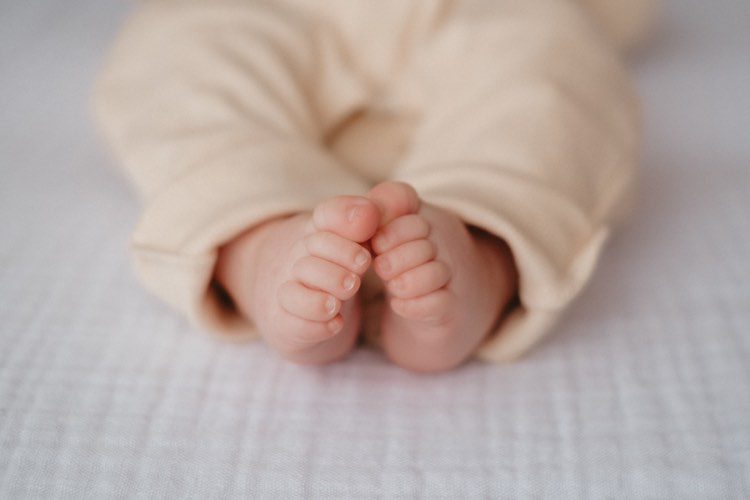
Essential care for baby
Everything is ready, the nursery, the cuddly toys, and the bag for the maternity hospital… All that's left is to go! And the day of the big meeting arrives! We are amazed by this little bundle… by so much perfection. These tiny fingers with tiny nails at the tips, so delicate… And happiness fills us, we already know each other while discovering ourselves… Breastfeeding begins and sometimes comes with minor tummy troubles: small cries, a tense belly, knees drawn up… Ah ah ah… little colics? That's when I remember that grandma Lison offered me a magical box, she said! Everything for baby’s little bumps, natural and organic herbal potions. I discover Calm Bidou, full of promises just in the name! A tummy massage and sometimes just applying it on the lower back, just above the buttocks, and I see that it soothes quickly. So it becomes a ritual during the first weeks, giving the little intestines time to properly establish their function too! Now, two months have passed with life gently flowing with baby, the routines are taking shape, the rhythm is gradually emerging… It’s time for his big brother to go to school, and here, after two weeks, his nose is running and of course, he transmits some germs to his little sister… And now his nose starts running too… grrrr! Let’s check the magical box from Grandma Lison… Achoo! In addition to nasal irrigation, here’s a new ritual: chest massage or foot sole massage (which is easier depending on how many layers of clothing are on to reach the area 😉). In four days, it’s resolved! Phew! Second challenge, boo-boo overcome! They don’t always tell us everything… But since it’s winter, I continue with one application per day under his little feet, a comforting massage that also helps strengthen his natural immunity to block future runny noses! Six months later, it’s no longer the adorable little baby who doesn’t move… she’s making herself heard! But now, we hear her much better: grumpy, red cheeks, drooling everywhere… I sense the third challenge looming, and not the least: teeth! This is serious business! Disrupted sleep, inconsolable baby… I give a chilled rattle, it helps but it starts again, I need to rotate wisely, always have some ready, a real race against time! Hey, First Teeth … I had forgotten the magic box offered by Grandma Lison… and here it is really magical! Immediate relief. A drop on the finger (so practical to put on) and my finger massaging the gum (and sometimes getting crushed by the pitbull marchers of Miss), several times a day, and you can really feel that it does good! We don’t quite get through it… The first tooth cuts through after a few days, with the smile and sleep restored! This product is so great, it relieves pain, softens the gum, and allows the little teeth to push through in relative calm… 9 months… "Look darling, she’s really gotten the hang of crawling, she’ll be walking soon!" But don’t expect everything… and bam… the table leg right in the forehead and the first bump! This time all the magic sticks are ready to draw—Bam! I just put it on the emerging bump and the magic again… Baby relieved resumes exploring, and miracle—after a few hours, the bump diminishes after two applications, and not even a bruise! It remains to test the Little Bobo (the second emergency stick from the magic box offered by Grandma Lison)… And it was his big brother who gave it to him a few days later by falling flat on his stomach at the square: screaming "maman…", scraped knees, tears streaming down his cheeks… With my square nurse diploma in hand, I take out a small tissue to wipe the gravel and my Little Bobo roll because it doesn’t sting, it relieves, cleans, and PLUS, he can put it on all by himself like a big kid! This also greatly limits the tears!!! Little Bobo and Bam-Bam will become essentials in my bag and on our outings because bruises, bumps, small burns, blisters, and scratches won’t last long! So thank you Grandma Lison for introducing me to magical herbal potions to soothe my two mischievous treasures because we are quite unprepared for these everyday little injuries… unfortunately, we don’t have parenting classes to manage all the hazards of our new role 😊! And it’s still much better to work with natural resources when possible… especially when you see how well she made the tiny fingers of our little one… https://www.youtube.com/watch?v=BQE5Wr4XvVc
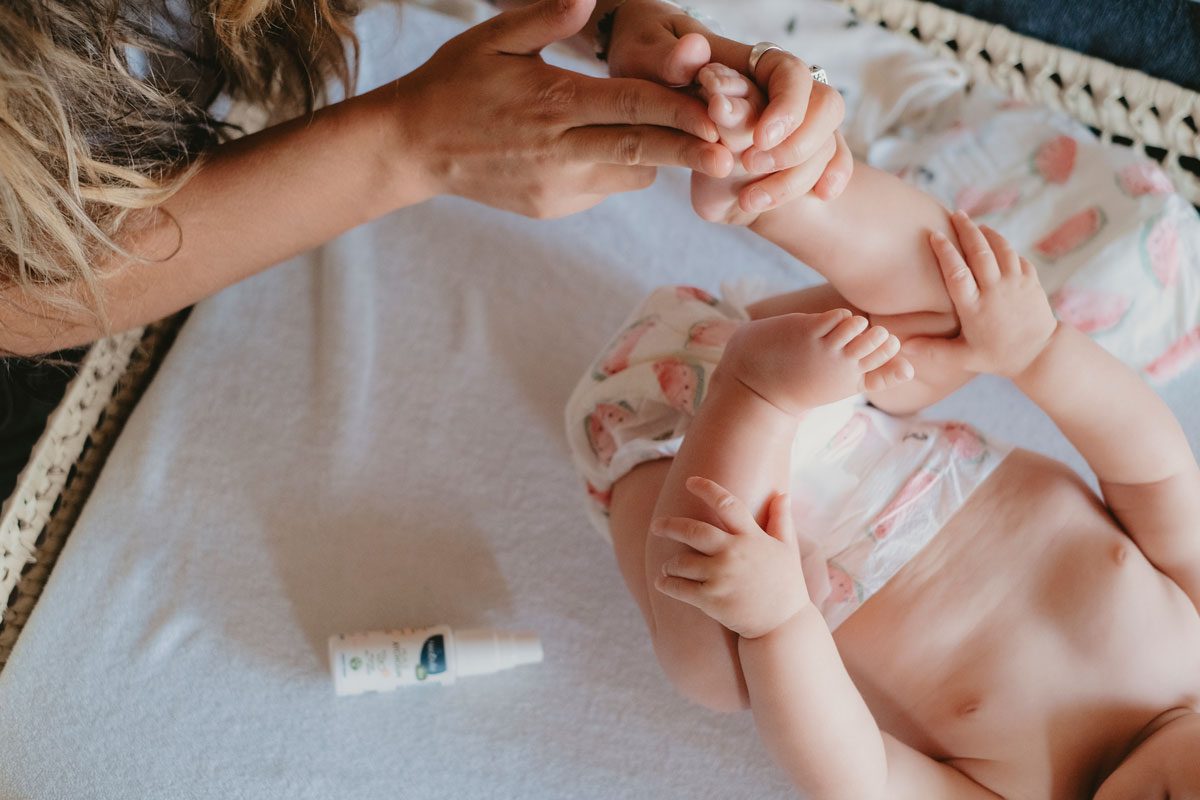
Winter and baby, how to boost their natural defenses?
Antivirals, antinfectious agents…essential oils are particularly effective in fighting winter ailments. They are excellent allies to help the body fight viruses and other illnesses. Especially in children and babies, some essential oils are very useful and help strengthen the immune system naturally and safely. They can be applied as a chest massage or on the soles of the feet. However, always be careful to use them diluted and properly dosed! Ravintsara essential oil is a powerful antiviral and is remarkable for stimulating the immune system. Remember to use ravintsara essential oil whenever you want to boost natural defenses. Linalool thyme essential oil is an anti-infectious. Linalool thyme is the gentlest of the thymes for fighting all kinds of infections in the most sensitive, especially respiratory infections (rhinitis, rhino-pharyngitis, bronchitis, etc.). Eucalyptus radiata essential oil is the useful essential oil for decongesting the upper respiratory system and also has an immune-stimulating effect. Well tolerated by the skin, it differs from the very powerful Eucalyptus globulus essential oil, which is not recommended for very young children. Discover our Atchoum care range made in the Loire, utilizing the properties of these essential oils.
Are essential oils endocrine disruptors?
There is much talk about endocrine disruptors, but what exactly is an endocrine disruptor? An endocrine disruptor is a substance capable of interfering with our hormonal system by inducing a harmful effect on health. Critical periods of development where hormonal regulation is particularly important (during fetal development, early childhood, puberty or adolescence, pregnancy), exposure to endocrine disruptors can be concerning. A multitude of substances can be endocrine disruptors, but certain pesticides and plastic components have been found to be endocrine disruptors, such as bisphenol A for example, which is now banned in baby bottles and food containers. A national program to identify endocrine disruptors is underway to regulate them. Are essential oils suspected of being endocrine disruptors? In the media, a scientific study has been reported multiple times, where American researchers demonstrated an endocrine disruption after applying cosmetic products containing lavender and tea tree essential oils. Notably, 60 Million Consumers relayed this study, raising fears and mistrust among consumers regarding these essential oils without any real basis! Since its publication, this study has been cited hundreds of times as a reference for the estrogenic or endocrine-disrupting activity of lavender or tea tree essential oils without additional data. This study has been criticized by many authors on several points and other studies have shown that these essential oils do not disrupt the endocrine system. The SCCS, the Scientific Committee on Consumer Safety of the European Commission, discredited this study itself. Some authors attribute the endocrine effect noted in the American study to phthalates contained in plastics or pesticides that may have contributed to the effect. And what about Neobulle products? At Neobulle, we pay close attention both in the choice of ingredients and in our packaging choices. We select high-quality and organic essential oils. Our certification body, Bureau Veritas, regularly conducts tests on our finished products to check for the absence of pesticides. We choose packaging free of phthalates for plastics or made of glass with good chemical resistance. We remain very attentive to the evolution of techniques and scientific research in this field.
